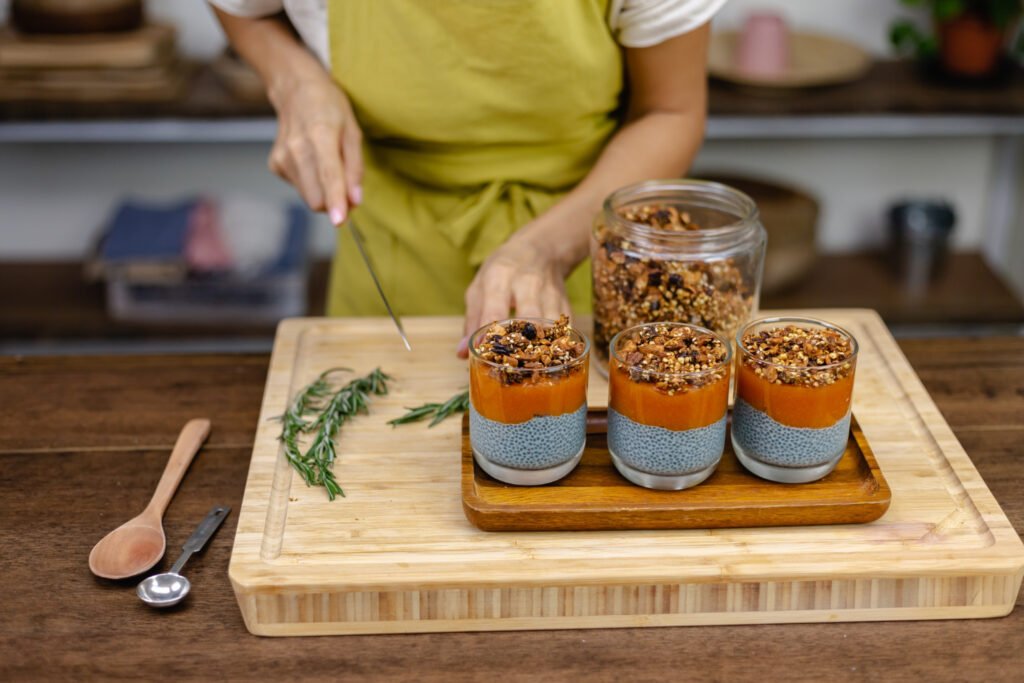Storing Food Before the Cold Was Possible
Imagine you’re living 3,000 years ago. There’s no fridge in your kitchen, no freezer humming in the background. Summer heat spoils meat in hours. Grain attracts insects. Vegetables wilt before they can be eaten. Yet people still managed to store food, share meals, and survive harsh winters. How did they do it?
The answer lies in ancient food preservation methods, techniques so clever that many are still used today. From drying fish along Mediterranean coasts to fermenting cabbage in Northern Europe, ancient people turned necessity into innovation. Surprisingly, these old methods didn’t just keep food edible; they often made it tastier, healthier, and central to cultural traditions.
When you step back, it feels like food preservation isn’t just about storage, it’s about survival, flavor, and identity. Let’s explore the tools, techniques, and stories behind how our ancestors ate well without modern appliances.
Why This Topic Matters
Food preservation has always been tied to survival. Without it, early communities couldn’t store harvests, travel long distances, or survive winters. But beyond survival, preservation shaped cuisine itself. The salty tang of prosciutto, the deep flavor of aged cheese, the sour crunch of sauerkraut—all are gifts of ancient preservation.
Understanding the history of ancient food preservation methods helps us see how cooking traditions formed. It also reminds us that sustainability and creativity aren’t modern inventions; they’ve been part of human kitchens for millennia.
Ancient Food Preservation Methods: A Guide
Drying: The Oldest Trick in the Book
Drying is perhaps the earliest and simplest method. Sunlight and air removed moisture, making it hard for bacteria to thrive.
-
In the Middle East, dates and figs were dried under the desert sun.
-
Nordic cultures dried fish on wooden racks, turning it into stockfish.
-
In Africa, meat was sliced thin and left to dry in the open air, an early form of jerky.
Even today, dried fruits and jerky echo these ancient traditions.
Salting and Brining: Preserving with Minerals
Salt was once so valuable it was called “white gold.” It drew moisture out of food, stopping decay.
-
Romans salted fish to make garum, a fermented sauce that flavored nearly every meal.
-
In medieval Europe, hams and fish were preserved in salt, feeding sailors and armies.
-
Brining (soaking in salt water) kept vegetables crunchy and meats moist.
Salt wasn’t just seasoning it was survival.
Fermentation: Turning Decay into Flavor
Fermentation sounds strange, letting food “rot” in a controlled way—but it created some of the world’s most beloved dishes.
-
Koreans fermented cabbage into kimchi, a tradition dating back thousands of years.
-
Europeans turned milk into cheese, extending dairy shelf life while creating variety.
-
Beer and wine, born from fermenting grains and grapes, became both food and ritual.
Surprisingly, fermentation also boosted nutrition by creating probiotics and vitamins.
Smoking: Flavor Meets Function
Smoking meat and fish didn’t just taste good; it slowed bacterial growth by coating food with antimicrobial compounds.
-
Indigenous peoples in North America smoked salmon, making it last for months.
-
In Europe, smoked sausages and hams became staples, especially in colder regions.
-
Even today, smoked cheese, fish, and meats carry the same earthy flavors.
Underground Storage: Using Nature’s Coolness
Before refrigeration, ancient people built “earth fridges.”
-
Root cellars kept potatoes, carrots, and apples cool underground.
-
In Persia, yakhchals (giant clay domes) stored ice and food using clever ventilation.
-
In colder climates, people buried food in permafrost, nature’s freezer.
This simple method meant food could survive through seasons without spoiling.
Pickling: Vinegar and Beyond
Pickling uses acids like vinegar to create an environment hostile to bacteria.
-
Cucumbers, onions, and garlic were pickled across Europe.
-
Ancient Mesopotamians pickled vegetables for a year-round supply.
-
Pickled herring became a staple in Northern Europe, sustaining people through long winters.
Pickles weren’t just crunchy snacks; they were vital for survival.
Tools of Ancient Food Preservation
To make these methods work, ancient kitchens relied on tools we’d call primitive but ingenious:
-
Clay jars sealed with wax or oil for pickling and fermenting.
-
Wooden racks for drying meats, fish, and fruits.
-
Stone cellars or underground pits for cool storage.
-
Bronze knives and mortars were used to prepare food for preservation.
-
Salt pans and brine vats for curing meats and fish.
These tools weren’t gadgets they were lifelines.
Comparing Ancient and Modern Preservation
| Preservation Method | Ancient Technique Example | Modern Equivalent | Pros & Cons Today |
|---|---|---|---|
| Drying | Sun-dried figs, fish racks | Electric dehydrators | Keeps nutrients, but slower |
| Salting/Brining | Roman garum, salted hams | Refrigerated brine solutions | Adds flavor, but high sodium |
| Fermentation | Cheese, beer, sauerkraut | Controlled fermentation labs | Health benefits require skill |
| Smoking | Smoked fish/meat in huts | Electric/hardwood smokers | Adds taste, but not long-term storage |
| Underground Storage | Root cellars, yakhchals | Refrigerators & freezers | Eco-friendly, but climate-dependent |
| Pickling | Vinegar-pickled vegetables | Canned pickles, industrial jars | Long shelf life, less artisanal flavor |
Here’s what this really means: ancient people weren’t behind us; they simply had different tools, guided by nature and creativity.
My Experience: Tasting Ancient Preservation Today
A few years ago, I visited a traditional village in Eastern Europe where families still ferment cabbage in large clay barrels every autumn. The barrels sit outside, covered with wooden lids and stones, slowly transforming cabbage into tangy sauerkraut. I was offered some straight from the barrel. It was crisp, sour, and alive with flavor—not like the store-bought jars.
Later, I tried making jerky by sun-drying strips of beef on a balcony. The process was slow, and I worried about flies. But when I finally tasted it, the smoky, chewy texture felt like stepping back in time.
These small experiences gave me a glimpse of how much patience, knowledge, and trust in nature our ancestors lived with.
Expert Insights
The Smithsonian Institution has documented ancient preservation methods in cultures worldwide, noting how survival shaped culinary traditions. National Geographic often highlights traditional fermentation, describing it as both a survival tactic and a culinary art.
According to History.com, salt routes across Europe and Asia fueled trade, wars, and empires. Food wasn’t just food; it was currency.
Modern nutritionists also point out that many preserved foods—fermented vegetables, dried fruits, and smoked fish are still healthier than processed snacks today.
Why We Still Use Ancient Methods
Even with refrigerators, many ancient methods survive because they offer unique benefits:
-
Taste: Fermented foods have depth no fridge can create.
-
Health: Probiotics, minerals, and vitamins remain rich in preserved foods.
-
Tradition: From kimchi to sauerkraut, families still practice these techniques as rituals.
-
Sustainability: Using sun, salt, and earth is eco-friendly compared to energy-hungry refrigeration.
When you step back, it feels like our ancestors weren’t just surviving—they were creating flavors that defined cuisines we still love.
FAQs: Ancient Food Preservation Methods
Q1: What was the most common ancient food preservation method?
Drying and salting were the most widespread because they required simple tools and natural resources.
Q2: Did ancient people refrigerate food with ice?
Yes, in some regions. Persians built yakhchals for ice storage, and wealthy Romans imported mountain snow for cooling.
Q3: Are ancient preservation methods still safe today?
Yes, when practiced correctly. Fermentation, pickling, and smoking remain widely used worldwide.
Q4: Which ancient method influenced modern cuisine the most?
Fermentation since it given us cheese, bread, beer, wine, yogurt, and countless condiments.
Final Thoughts: Lessons from the Past
The ancient food preservation methods our ancestors invented weren’t just about making food last. They created flavors, traditions, and cultures that still feed us today. Every jar of sauerkraut, every slice of smoked salmon, every piece of jerky is a reminder that human creativity has always found ways to work with nature.
Here’s what this really means: while refrigerators may dominate our kitchens now, they can’t replace the soul of food created by salt, sun, smoke, and time. By looking back, we don’t just honor the past—we rediscover methods that are healthier, tastier, and often more sustainable.
So maybe next time you eat cheese, drink wine, or snack on dried fruit, pause for a second. You’re not just eating—you’re tasting history.



